Fortresses in the Stockholm Archipelago
In July, I was fortunate to participate in a short blogger trip on the theme of “Stockholm archipelago – close yet a world away.” We stayed on a relatively unknown island called Nässlingen, but also visited two fortresses to learn a bit about Swedish military history.
Disclosure: I took part in this military history tour as part of a blogger fam (familiarization) trip hosted by Visit Stockholm and Stockholm Archipelago. Nevertheless, all opinions are my own.
It hadn’t occurred to me, with my view of modern Sweden as peaceful and modern, that the country has always wrestled with a problem caused by geography: how to defend itself.
The capital city, Stockholm, occupies 14 different islands, which would be hard enough to defend from attacks from the sea, but extending into the Baltic from there, and far to the north and south, is the Stockholm archipelago, made up of around 30,000 more islands.
So how does one defend that? One protects the deeper channels: the ones that warships would need to pass through to reach Stockholm. On our trip, the two fortresses we visited showed us two very different eras in technology and strategy.
Vaxholm Citadel
Originally, Vaxholm Citadel was a round stone tower dating to 1548. Along with two other fortresses, it guarded the main waterway to approach Stockholm from the north on the Baltic Sea. Reinforced in the 17th century, it was important in defending against Russian attacks in 1719.
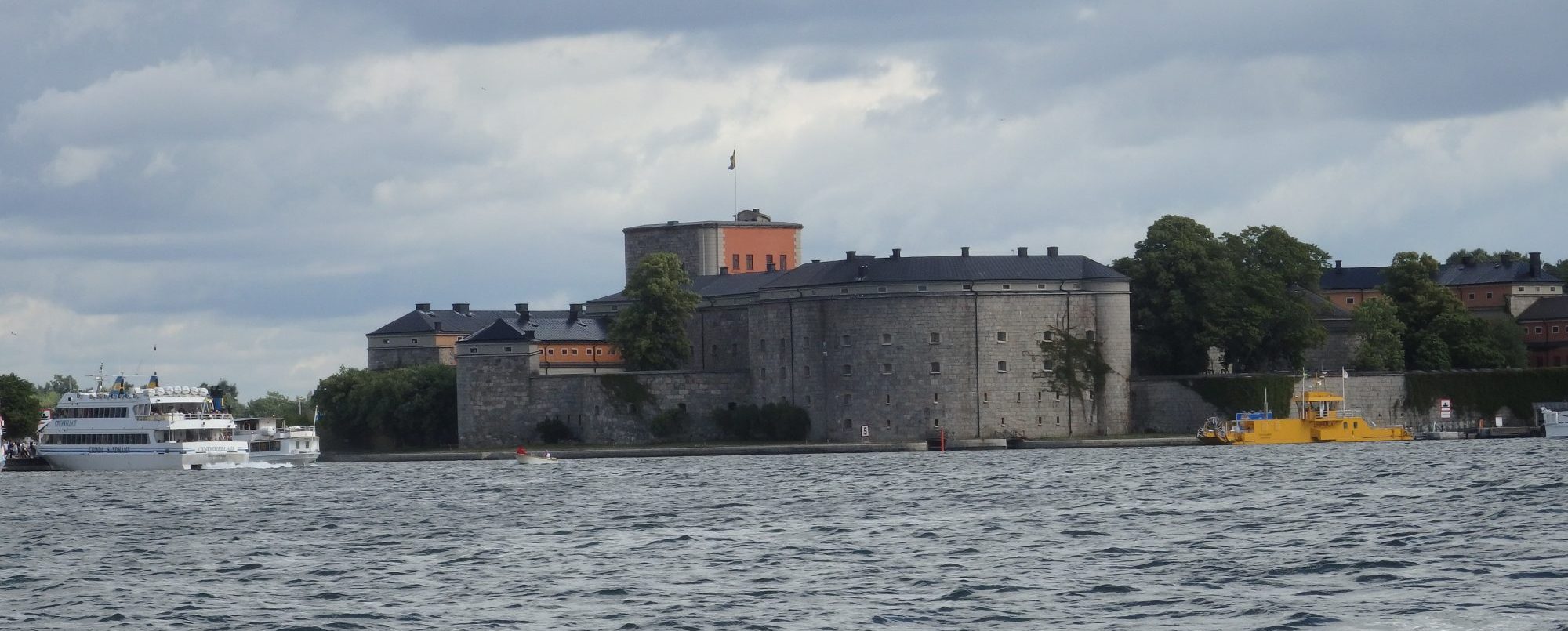
The current fortress, however, was built in the mid-19th century and became obsolete soon after because of improvements in weaponry. Today, owned by the state, it is a museum and conference center.
Vaxholm’s exhibits
While the fortress made a striking impression when we approached it from the water, we did not have enough time to explore it completely. We saw some interesting rooms containing models, diagrams and some life-sized reconstructions to teach visitors about Swedish military history. Unfortunately, most of the explanatory signs were in Swedish only, which made me happy that we had an English-speaking guide.
Many of the exhibits are intended to appeal to children, and I’m sure that Swedish-speaking children would greatly enjoy them. There’s even a “spy school” with a series of tasks for children to try out.
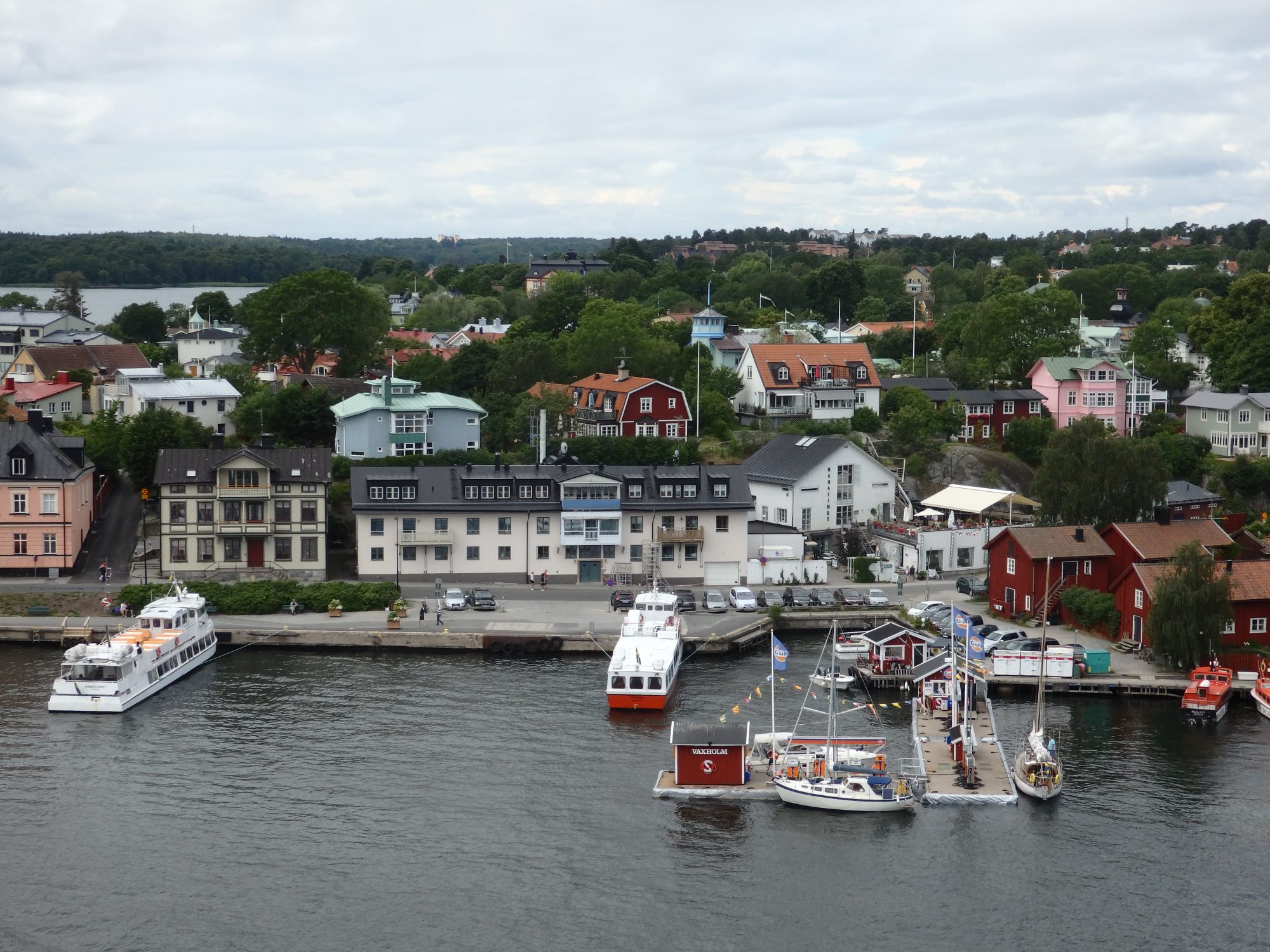
I enjoyed climbing up to the tower: only 130 steps, it provided great views of the town right across the narrow waterway as well as several neighboring islands.
If you’re not exploring the archipelago in a boat of your own (The guest harbor has room for 100 boats.), Vaxholm (along with many other islands) is reachable by ferry from Stockholm or from various other islands. A company called Waxholmsbolaget provides public transportation for 33 boat routes year round.
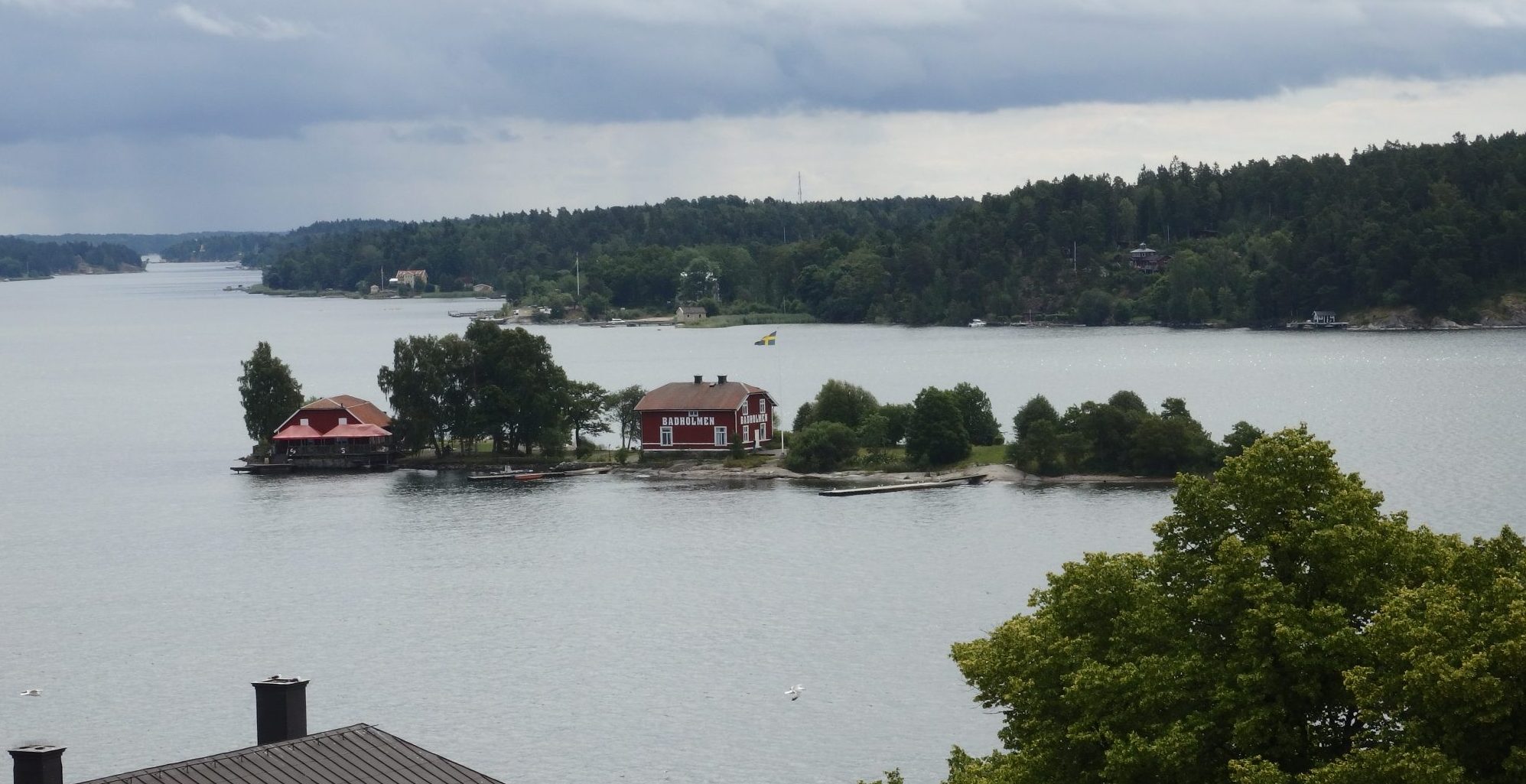
Siaröfortet
Kyrkogårdsön is the real name of this island. Construction of Siaröfortet (website in Swedish – use Google translate) started in 1916, near the end of World War I. The Swedish military intended it to replace Vaxholm, and particularly to fend off attack from the Russians. However, it wasn’t completely finished until 1929, by which time the technology in the fortress was hopelessly outdated. It closed only a year later, in 1930, though it continued to serve as a training location after that.

I wouldn’t call this fortress an epic fail, since it wasn’t a catastrophe. A fellow blogger touring it with me, Penny of Six Legs Will Travel (a fascinatingly different “look” at travel, by the way), called it a “fustercluck.”
The main reason it failed was that, by the time it was finished, its technology wasn’t up to snuff. Given that I know absolutely nothing about military strategy, I didn’t really understand why it was obsolete; just that the weaponry was outdated.
I do know that the fortress was well camouflaged, dug into the ground so that its roof is at ground level. From above or from a distance across the water, it would appear to be a big granite outcropping. However, the ventilation chimney was too big, making it vulnerable to attack by poison gas. (Kids skateboard on it nowadays.)
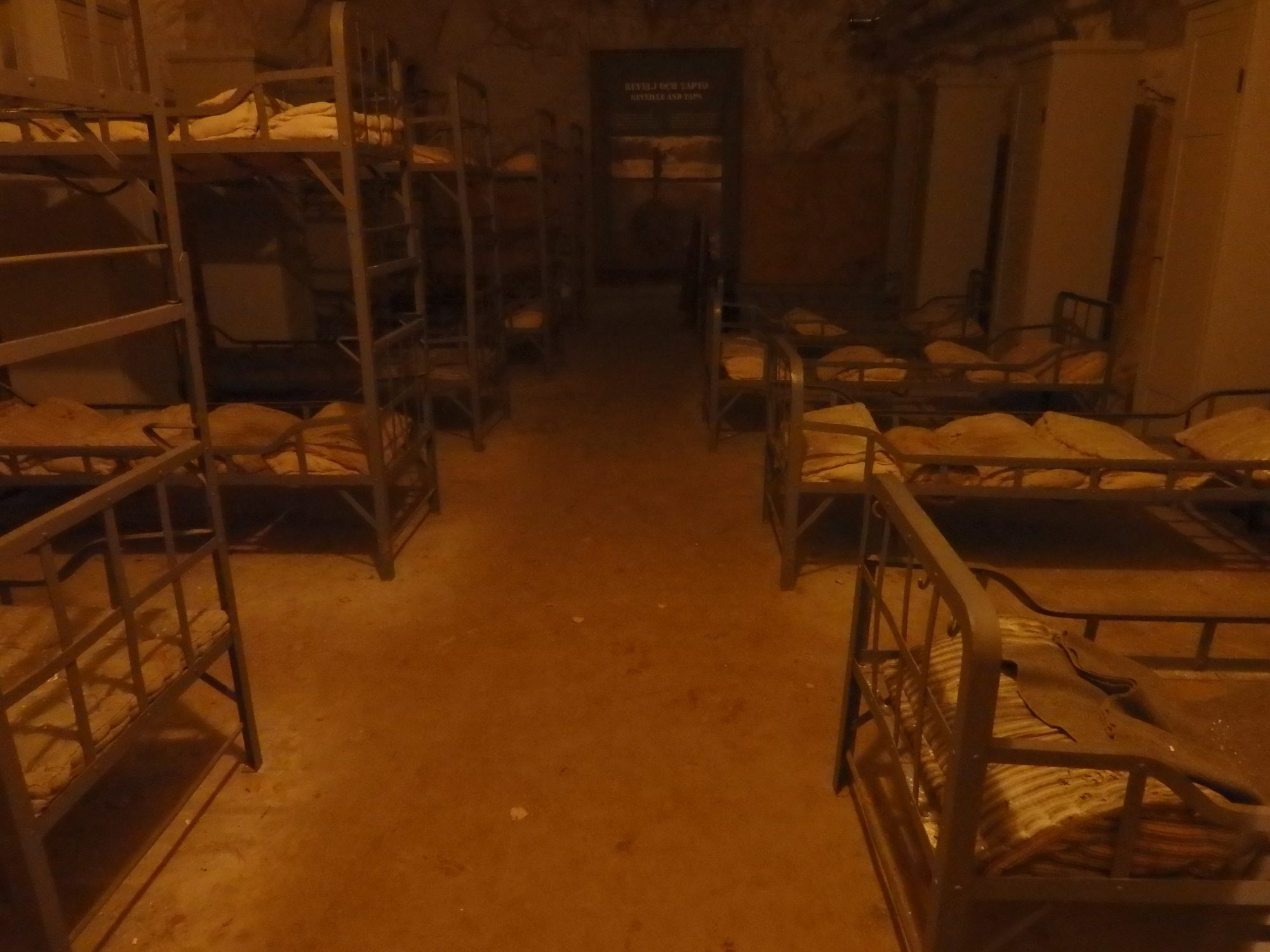
I am sure that sick leave among the soldiers stationed there must have been very high. Cut out of the bedrock, the fortress was (and is) incredibly damp and cold. It looks positively grim inside. Outside the kitchen, it would have been bitterly cold.
Our tour guide explained more or less how the fortress was supposed to operate. While we couldn’t visit the gun turrets, we did visit the command center, the communications room (telegraph) and the living quarters. Some of the sleeping quarters still hold the original bunkbeds and mattresses, and we saw the row of sinks in the hallway which offered the soldiers’ only way to get clean.
As we toured Siaröfortet, a blogger asked our guide why the fortress is preserved and shown, given that it represents a failed effort. Her response was yes, it was a failure, but it is part of Swedish history.
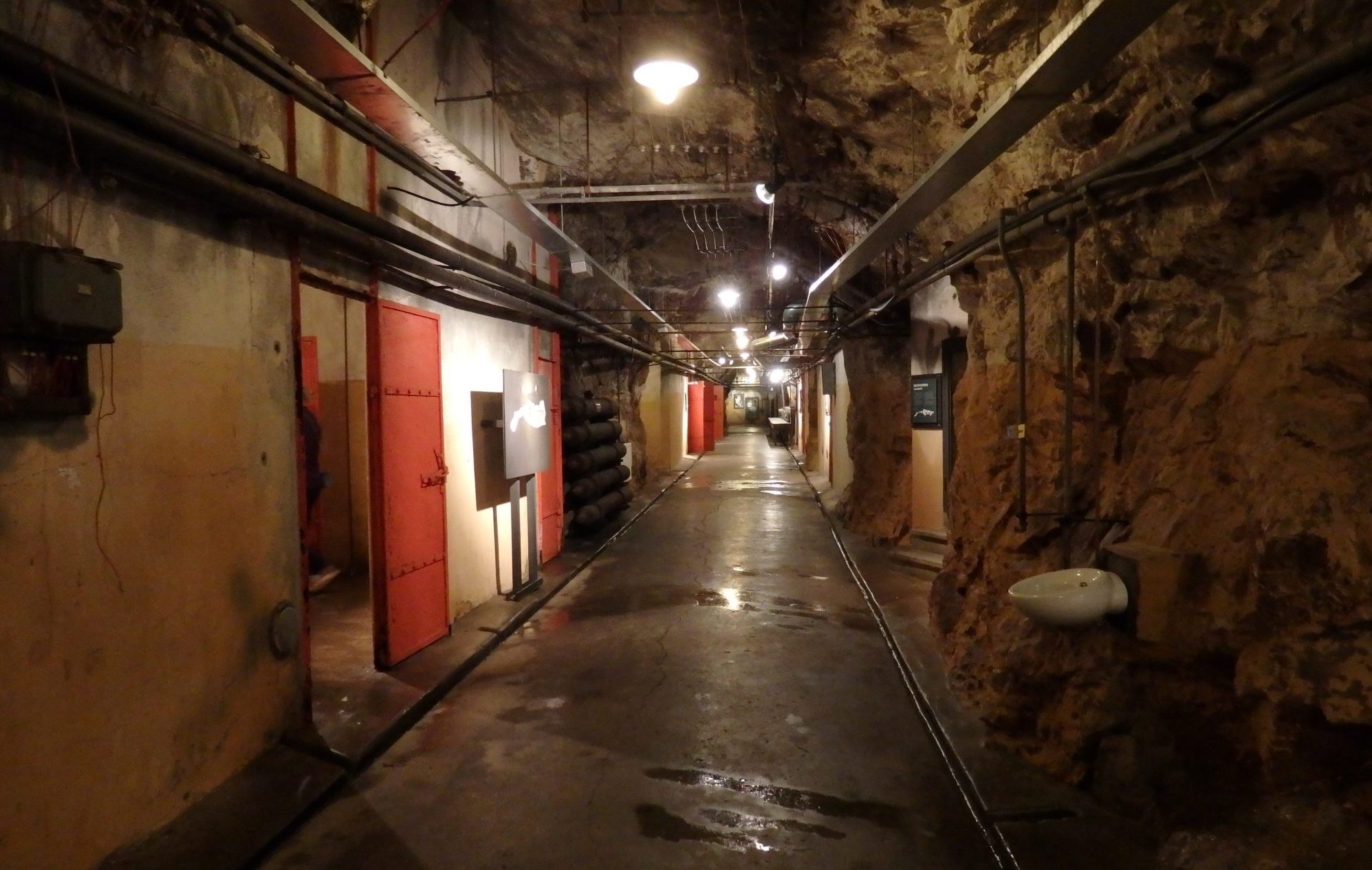
Today Kyrkogårdsön island houses a conference center and accommodations. A hostel can house up to 42 guests in 14 rooms, and two vintage army tents can sleep up to 10 people each.
Wira Bruk
To continue the theme of military history, we also visited Wira Bruk (website only in Swedish), a preserved weapons forge and museum. Unlike the two fortresses, it’s on the mainland, not the archipelago. The region, called Roslagen, oozes charm, with neat rolling farmland interspersed with pine forests and sprinkled with picturesque red wooden houses.

Starting in the 1600’s, the Swedish army ordered its swords from the blacksmiths at Wira Bruk. Later the forge switched to producing farm implements like axes.
Today, as a museum, it preserves a collection of buildings from the days when the forge was in business. The most interesting of these is a barn-like structure with seven (I think) huge fireplaces for two blacksmiths each. Anvils still stand near each one, as well as bellows.
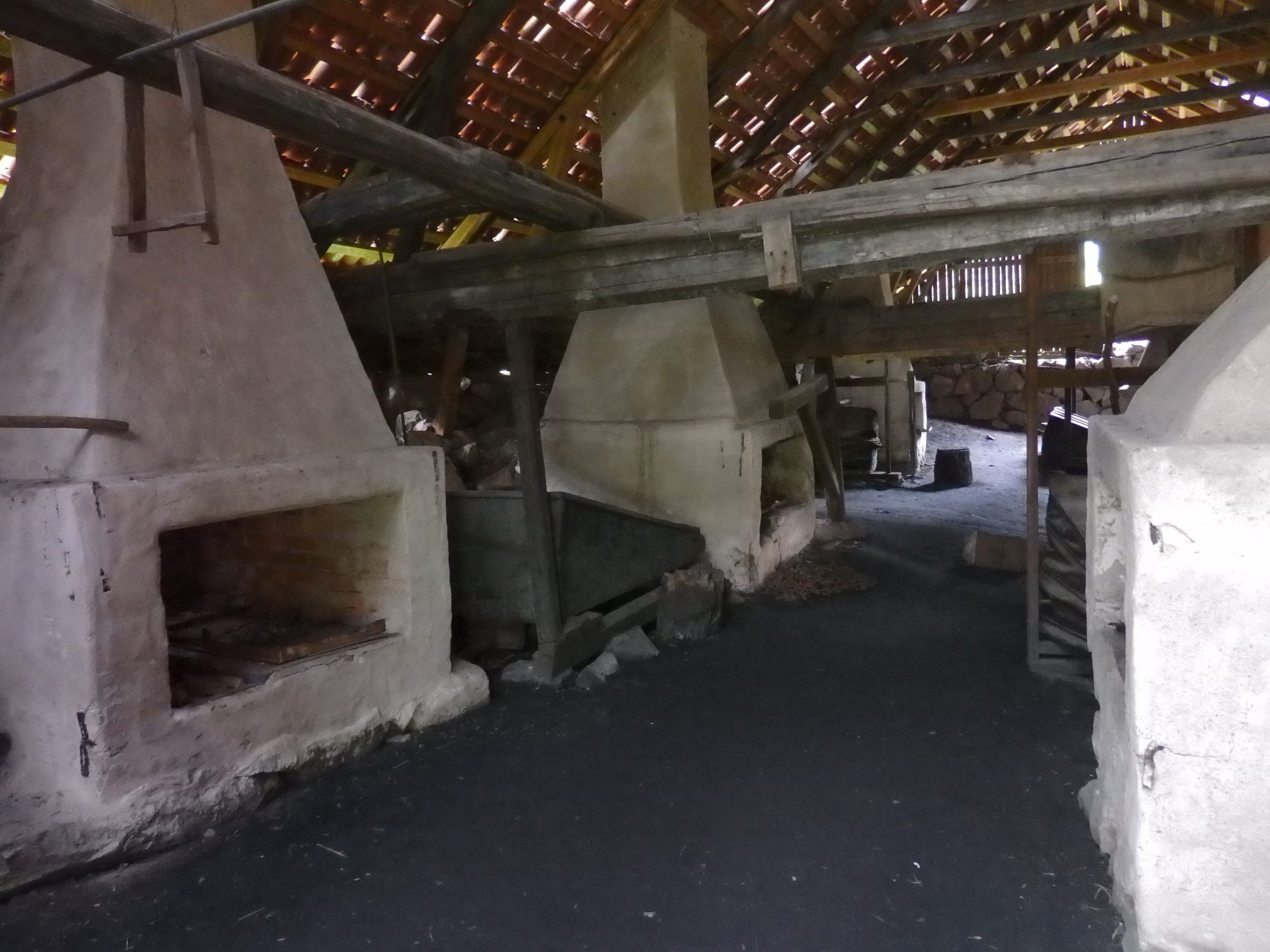
The appearance of the structure surprised me: in particular, the floor. While the fireplaces and chimneys are massive and presumably built of brick that has been plastered over, the dirt floor is not level. It slopes significantly, with rises and dips here and there. You would think this would be hazardous for blacksmiths handling hot metal around open flames.
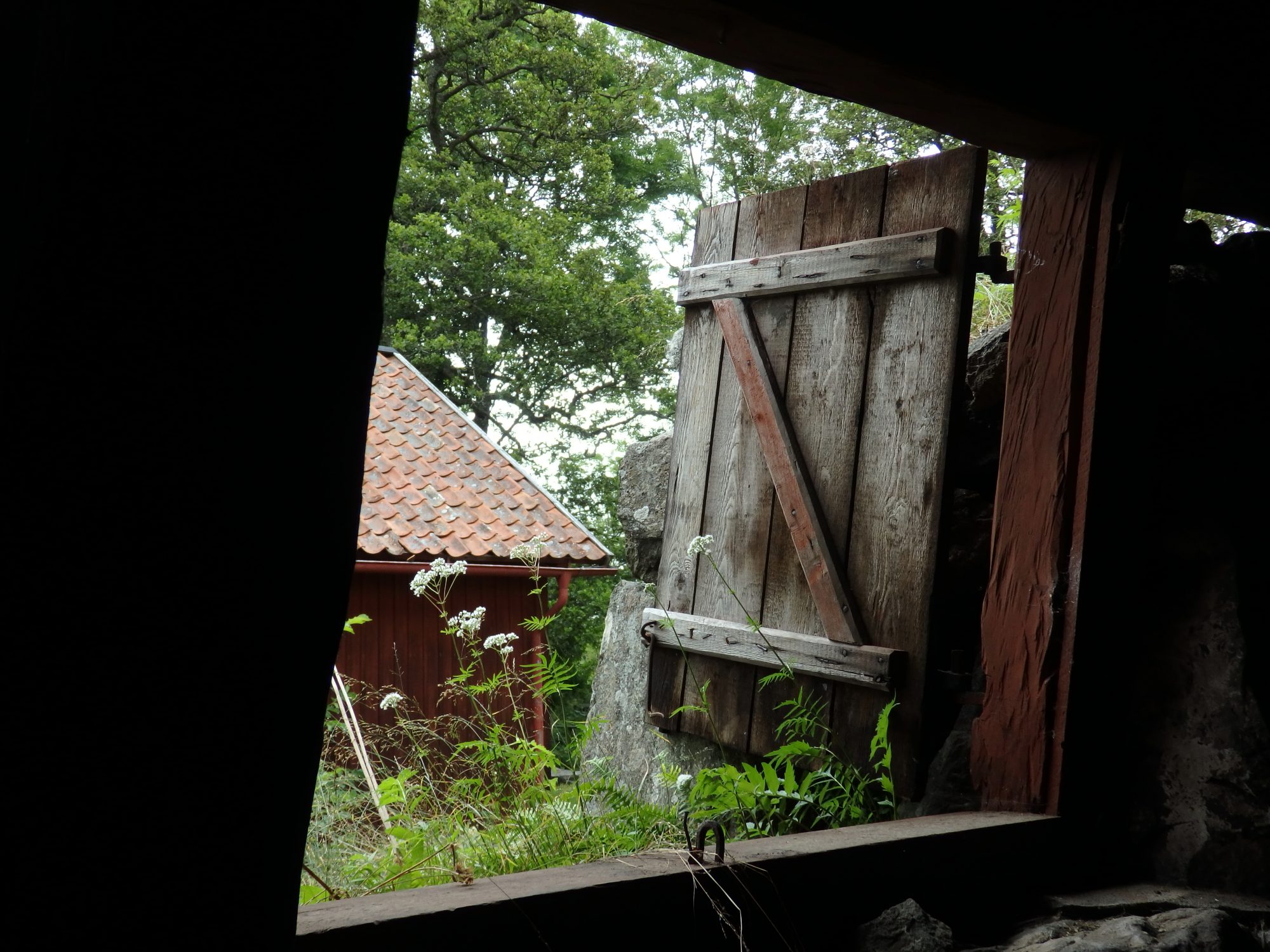
Today it is a dark, quiet place, but I imagined the cacophony of fourteen blacksmiths hammering, seven huge bellows pumping, and seven fires blazing. It would have been hot and smoky in the summer, and in the winter too, for that matter.
The Stockholm archipelago offers far more things to see and do, but I’ll write more about it another time. Have you been there? What did you see and do?
And if you’d like to read another blogger’s account of the same fam tour, read Jane and Duncan’s post on To Travel Too.



What a perfect place to defend a major city … invading ships can get stuck in there with nowhere to go!
Yes, I guess that was the point. But if the ships have more modern guns, then it doesn’t work anymore.